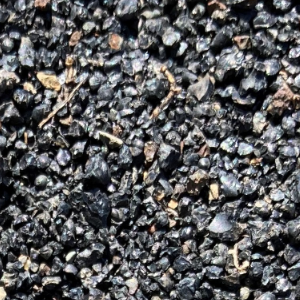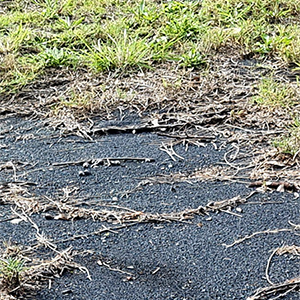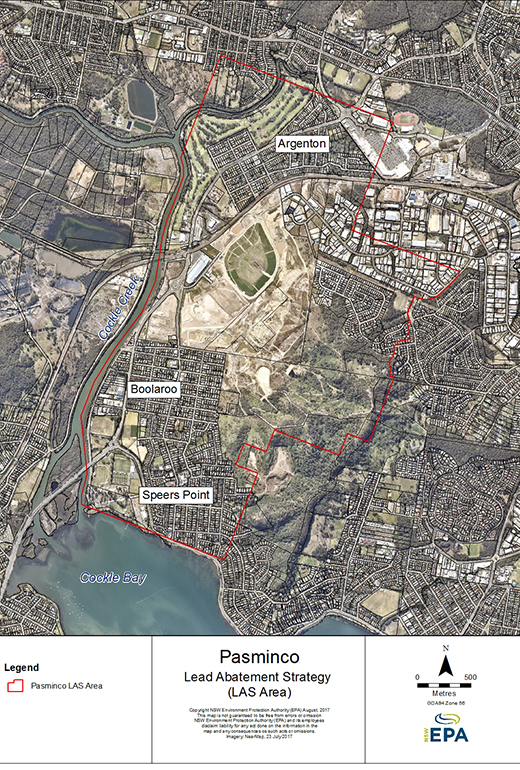Environmental issues associated with metal production at the former Pasminco smelter in North Lake Macquarie led to investigations which identified issues including the aerial fallout of lead oxide which impacted surface soils to properties within the suburbs of Boolaroo, Argenton to the north and Speers Point to the south. These investigations also identified the use of a smelter by-product (black slag) as fill material, which contains leachable concentrations of heavy metals.
The issues found led to the development of a Lead Abatement Strategy (LAS) Area which covers the land considered to be potentially contaminated by lead from the former Pasminco smelter operations.
Disposal of surface soils impacted with lead oxide
Residents living in the LAS area can dispose of surface soils contaminated with lead oxide, unless it contains black slag, to any landfill that accepts general household waste (GSW). Soils contaminated with black slag require additional management.
The option to landfill lead oxide impacted surface soils as GSW provides closer-to-home disposal options for residents if they are removing soil while doing major renovations or works at home or who and are required by council or Planning to remediate the soil on their site.
To assist residents with the cost of disposal for the lead impacted soil, the EPA will waive the NSW Government Waste Levy which is currently $143 per tonne. Normal waste facility charges (gate fees) will still apply.
Residents can get more information by contacting the EPA Environment Line on 131 555 or emailing info@epa.nsw.gov.au, or calling Lake Macquarie City Council on 02 4921 0333.
Pasminco black slag
Operation of the Pasminco smelter resulted in a by-product called black slag which also contained residual lead.
Black slag is a black sand-like substance that has good drainage and packing properties. Although it has high levels of lead, in the 1960s it was deemed safe for landscaping works.
From 1960 to 1995, up to 2 million tonnes of slag was used throughout Lake Macquarie and surrounds, mostly on Council parks and reserves for fill and landscaping. A relatively small amount was used on residential land.
- See the fact sheet Managing Black Slag affected soils (PDF 370KB) on the Lake Macquarie website


Managing Pasminco black slag
Pasminco black slag contains high levels of lead so is not suitable for disposal as general solid waste and is not covered by the immobilisation approval. It cannot be landfilled without further assessment.
Black slag can be classified under General Immobilisation Approval 2009/07 (GIA2009/07) (PDF 13KB). This approval specifically applies to natural excavated materials contaminated with metallurgical furnace slag such as Pasminco black slag. Under GIA2009/07, material is classified according to leachable concentrations (using the toxicity characteristic leachable procedure) of lead and other listed contaminants. For Pasminco black slag, arsenic and cadmium are also considered contaminants of concern. Please note, total concentrations of the contaminants do not apply to the classification of this waste.
Any assessments to classify black slag should be undertaken by an appropriately qualified and experienced environmental consultant.
For more information about the disposal of black slag call Environment Line on 131 555 or email info@epa.nsw.gov.au.
Financial assistance
The Lead Mitigation Grant Program provides funding to eligible households who’s lands have been impacted by lead contamination from the former Pasminco Cockle Creek Smelter. The EPA funds this program, which is delivered by Lake Macquarie City Council.
The grants can be used for various remediation and mitigation activities, including for the disposal of lead contaminated soil.
Grants are provided to residents in the LAS area on a priority basis, for more information contact Council.
The below map shows the affected properties.

Frequently asked questions
What is the Lead Abatement Strategy (LAS) Area?
The Lead Abatement Strategy (LAS) Area is the part of North Lake Macquarie considered to be potentially contaminated by lead from the former Pasminco smelter at Boolaroo. To assist residents to address contamination on individual properties, the NSW EPA has facilitated a method of safe disposal of lead affected soil to reduce costs to residents.
Is my property included in the LAS Area?
The eligible properties are shown on the map above.
Why can I now dispose of soils contaminated with lead at landfills when I previously couldn’t?
In 2019 lead impacted soils in the LAS Area were reclassified after testing by the NSW EPA, assisted by Lake Macquarie City Council.
Laboratory analysis of 48 samples across 60 sites with elevated metal readings found that while lead contamination was elevated, the leachability of lead was very low, enabling the soil to be reclassified from restricted waste to general household waste.
The lead in the soil is effectively immobilised and does not impact the surrounding environment.
Does this mean I no longer have to remediate soils containing lead at my property?
You will only be required by council to remediate soils at your property if you are undertaking a redevelopment at the site which disturbs the soil.
While this approach makes disposal options easier, the soil should still be treated with caution on residential properties.
What does the levy exemption cover? Will there be other costs to me?
The levy exemption is only one component of the cost associated with cleaning up this legacy of soil contamination. Residents and landowners should factor in the other costs such as general waste disposal fees (non-levy), and removal including excavation and transport if needed.
Will the levy exemption cover other waste from my property?
No. The LAS levy exemption has been created to assist residents in removing legacy lead in soil from their properties. The exemption does not apply to any other type of waste such as black slag or waste generated by building or renovation works. Residents should take care to make sure that lead contaminated soil is segregated from other waste streams in those situations where soil removal forms part of other works.
How much contaminated soil can I remove?
There is no limit to the quantity of contaminated soil which can be removed from each property. The quantity will vary depending on the size of the property, the amount of garden or green space to be remediated and the type of redevelopment of the property. The immobilisation approval and levy exemption only applies to contaminated soil and not to any other type of waste, including black slag, non-impacted soil or construction waste. Each landowner is asked to be responsible in terms of how much waste they remove under this system.
Can I remove the soil myself, or do I need to use a contractor?
Residents do not need to use the services of a contractor to be able to receive the benefit of the immobilisation approval and levy exemption. Dust should be minimised (including wetting down if necessary) when excavating and transporting any lead contaminated soil. Each resident should consider any risk and benefits according to their individual circumstances. Residents should also consider potential health impacts of removing lead contaminated soil.
SafeWork NSW also has requirements for workers dealing with lead.
Can I take the contaminated soil to any landfill for disposal?
Yes, as long as the landfill holds an EPA licence to accept general solid waste.
How do I transport the soil to a Waste Management Centre?
All waste, including soil with lead in it, must be transported in a way that prevents dust being generated (i.e. securely covered, and wetted down if necessary, to prevent the soil from escaping during transport or storage).
Can my soil be recycled?
No. Because of the type and nature of the soil contamination, it is not considered to be suitable for any type of reprocessing, recycling or re-use.
I am included in the study area, but have a commercial or industrial business. Am I entitled to the levy exemption?
The LAS levy exemption only applies to residential properties within the study area.
Am I entitled to use the immobilisation approval and levy exemption?
No, the LAS levy exemption only applies to residential properties within the study area.
Where can I get more information?
Additional information can be obtained by calling Environment Line on 131 555 or Lake Macquarie City Council on 02 4921 0333. You can also put any concerns or questions in writing via email to info@epa.nsw.gov.au

